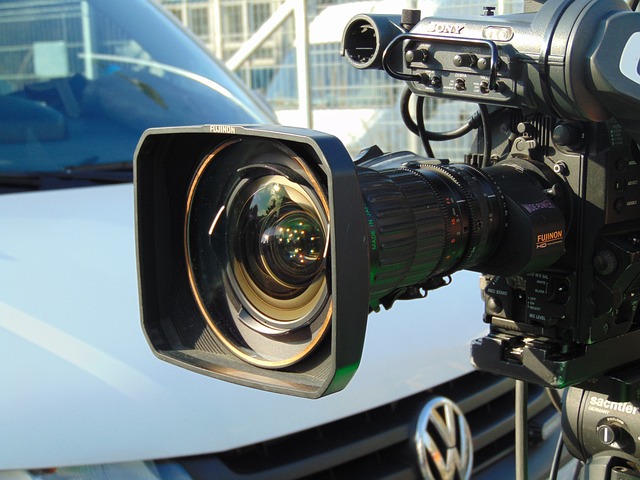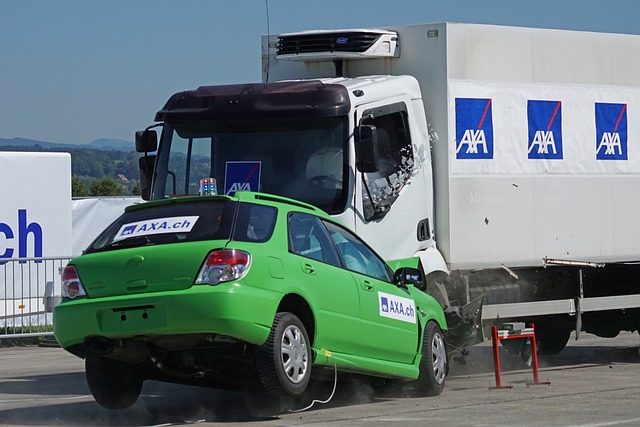Collision Coverage: Protecting Your New Car Against Accidents
Collision coverage is a critical element of auto insurance, shielding drivers from financial strain caused by vehicle damage in accidents. It covers damages from crashes with other vehicles or objects but excludes intentional damage like vandalism or natural disasters. Understanding the scope of collision coverage—its inclusions and exclusions—is key to making an informed decision. Two main types are Comprehensive (broad protection including theft and natural disasters) and Collision (focused on crash-related damages). Premium costs are influenced by vehicle make/model, age, driver history, location, and the chosen level of coverage. Balancing deductible amounts and coverage limits is crucial for aligning collision insurance with individual needs and budget constraints.
Looking to protect your new vehicle? Understanding collision coverage is crucial. This comprehensive guide delves into what this insurance policy covers, how it works, and why it’s essential for new car owners. We’ll explore different types of collision policies, their benefits, and potential drawbacks, comparing them with other auto insurance options.
Discover tips to help you choose the best collision coverage tailored to your needs and budget. Maximize your peace of mind and financial security on the road with our expert insights into collision coverage.
Understanding Collision Coverage: What It Covers and What It Doesn't

Collision coverage is an essential aspect of auto insurance that provides financial protection against the cost of repairing or replacing your vehicle after a collision. It covers damages resulting from accidents, whether it’s a head-on crash, a rear-end collision, or a sideswipe. When you have collision coverage, your insurance company will typically pay for repairs up to the actual cash value of your vehicle, minus your deductible.
However, collision coverage does not extend to all types of incidents. It excludes damages caused by intentional acts, such as vandalism or theft, and does not cover losses due to natural disasters like floods or earthquakes. Additionally, if you’re at fault for an accident and your collision coverage is active, it will only pay for repairs to the other driver’s vehicle and any damage to yours that isn’t covered under other policies, like comprehensive insurance. Understanding these limitations is crucial when deciding whether collision coverage is right for you.
Why Is Collision Coverage Important for New Vehicle Owners?

Collision coverage is a vital component of insurance for new vehicle owners, offering protection against unexpected and often costly accidents. When you purchase a new car, it’s an exciting time but also comes with inherent risks on the road. Accidents can happen at any moment, and being prepared financially can be a lifesaver. Collision coverage steps in to help cover the expenses related to repairing or replacing your vehicle after a collision, whether it’s a fender bender or a more severe incident.
This type of insurance is essential as it provides peace of mind, ensuring that you’re not left with a hefty repair bill or stranded due to an accident. It also protects new car owners from potential financial strain, allowing them to focus on recovery rather than immediate monetary concerns. With collision coverage, policyholders can rest assured that their vehicles and budgets are protected, enabling them to navigate the aftermath of an accident with greater ease.
Types of Collision Coverage Policies: Comprehensive vs. Collision

Collision coverage is a crucial aspect of insuring your new vehicle, offering protection against financial burden in case of accidents. When considering collision policies, two primary types stand out: Comprehensive and Collision. While both aim to shield you from unexpected costs, they differ significantly in their scope and exclusions.
Comprehensive coverage goes above and beyond, protecting your vehicle from a wide range of incidents besides collisions, such as theft, vandalism, natural disasters, and even accidental damage while parked. This type of policy is ideal for those seeking complete peace of mind. On the other hand, collision coverage specifically addresses damages resulting from accidents with other vehicles or objects, including liability for harm caused to others in the event of a crash. Understanding these distinctions is essential when selecting the most suitable Collision Coverage for your needs.
How Collision Coverage Works: Claims Process and Deductibles

Collision coverage is a crucial aspect of auto insurance that protects you financially in case your new vehicle is damaged in an accident. When you have collision coverage, your insurance provider agrees to pay for repairs or, if total loss is declared, help replace your vehicle up to its original value. The claims process typically begins when you file a report with your insurance company after an incident. They will then assess the damage and provide guidance on next steps.
The deductible, a predetermined amount you agree to pay out of pocket, is a key component of collision coverage. Before your insurance company starts covering repair costs, you’ll be responsible for paying this deductible. The higher your deductible, the lower your collision coverage premiums tend to be. It’s important to choose a deductible that aligns with your financial comfort level and the potential cost of repairs.
Factors Affecting Collision Insurance Premiums for New Vehicles

Several factors influence collision insurance premiums for new vehicles, and understanding them can help drivers make informed decisions. One significant factor is the vehicle’s make and model; certain brands and types are more prone to collisions due to design or safety features, impacting premium costs. Additionally, a vehicle’s age plays a role; newer cars often come with advanced safety systems that reduce the risk of accidents, leading to lower premiums.
Driver history and age are also critical considerations. Young or inexperienced drivers typically face higher premiums due to their higher accident risk. Conversely, safe driving records and older ages can result in more favorable rates. Other factors include location, as urban areas with heavier traffic may command higher premiums, and the type of collision coverage sought—comprehensive versus collision only—which affects costs differently.
Comparison with Other Forms of Auto Insurance

Collision coverage is a crucial aspect of auto insurance, distinct from other forms of protection. While comprehensive insurance covers various risks beyond collisions, such as theft or natural disasters, collision coverage specifically addresses damage resulting from accidents. This makes it a more targeted and often more affordable option for drivers who primarily seek protection against crash-related incidents.
When compared to liability insurance, which shields policyholders from financial obligations arising from causing harm to others, collision coverage focuses on the driver’s vehicle. It can help pay for repairs or even replace the damaged car in case of a total loss, providing peace of mind behind the wheel. Understanding these nuances is essential when selecting the right auto insurance policy to align with individual needs and budget considerations.
Tips for Opting for the Best Collision Coverage for Your New Car

When choosing collision coverage for your new car, consider your personal situation and driving habits first. Factors like your age, experience, and annual mileage can influence risk assessment, affecting premium costs. Be honest about your driving history and the type of vehicle you own; this ensures accurate pricing and adequate protection.
Additionally, research different insurance providers and their collision coverage policies. Compare deductibles, limits, and what’s included in each plan. Remember, a lower deductible means a higher out-of-pocket cost in case of an accident, while a higher deductible reduces premiums but increases your financial burden at claim time. Choose a balance that suits your budget and provides peace of mind.
